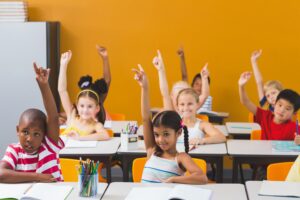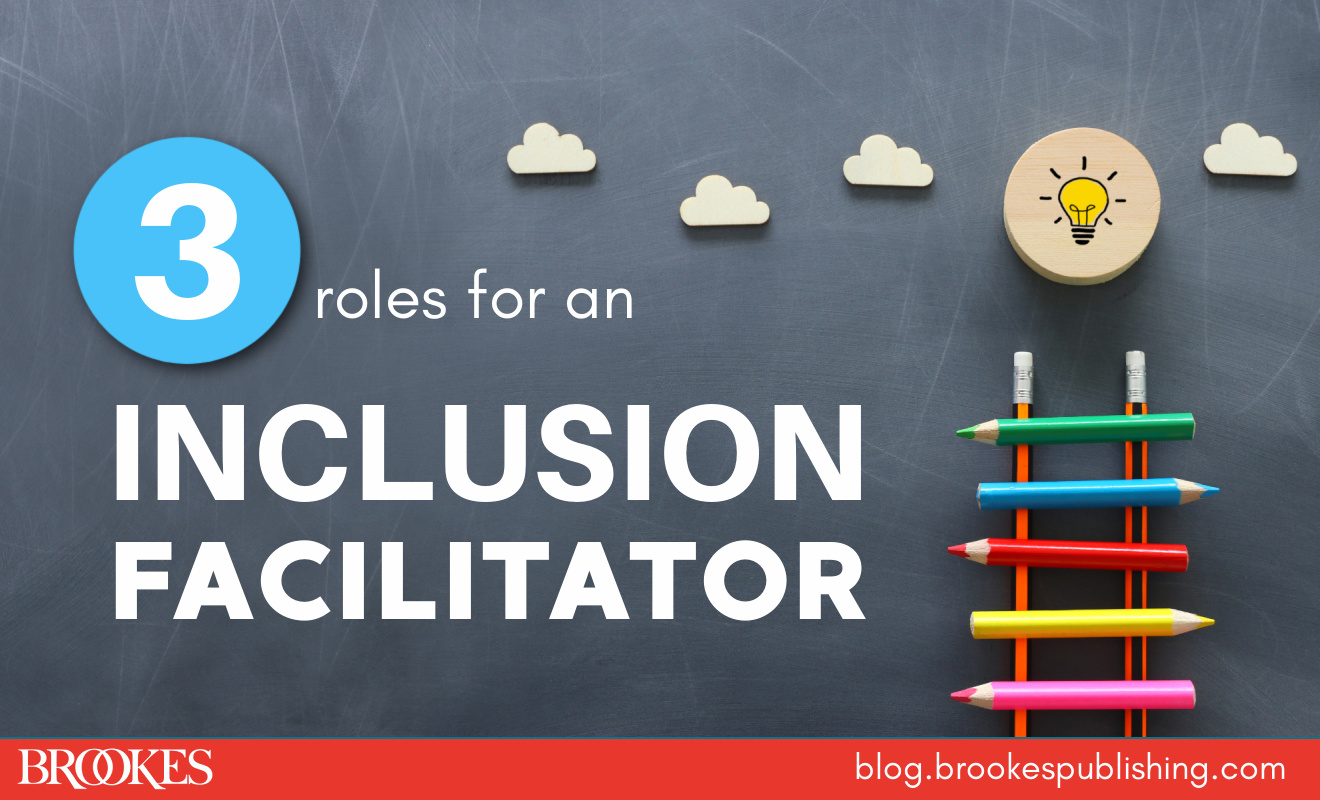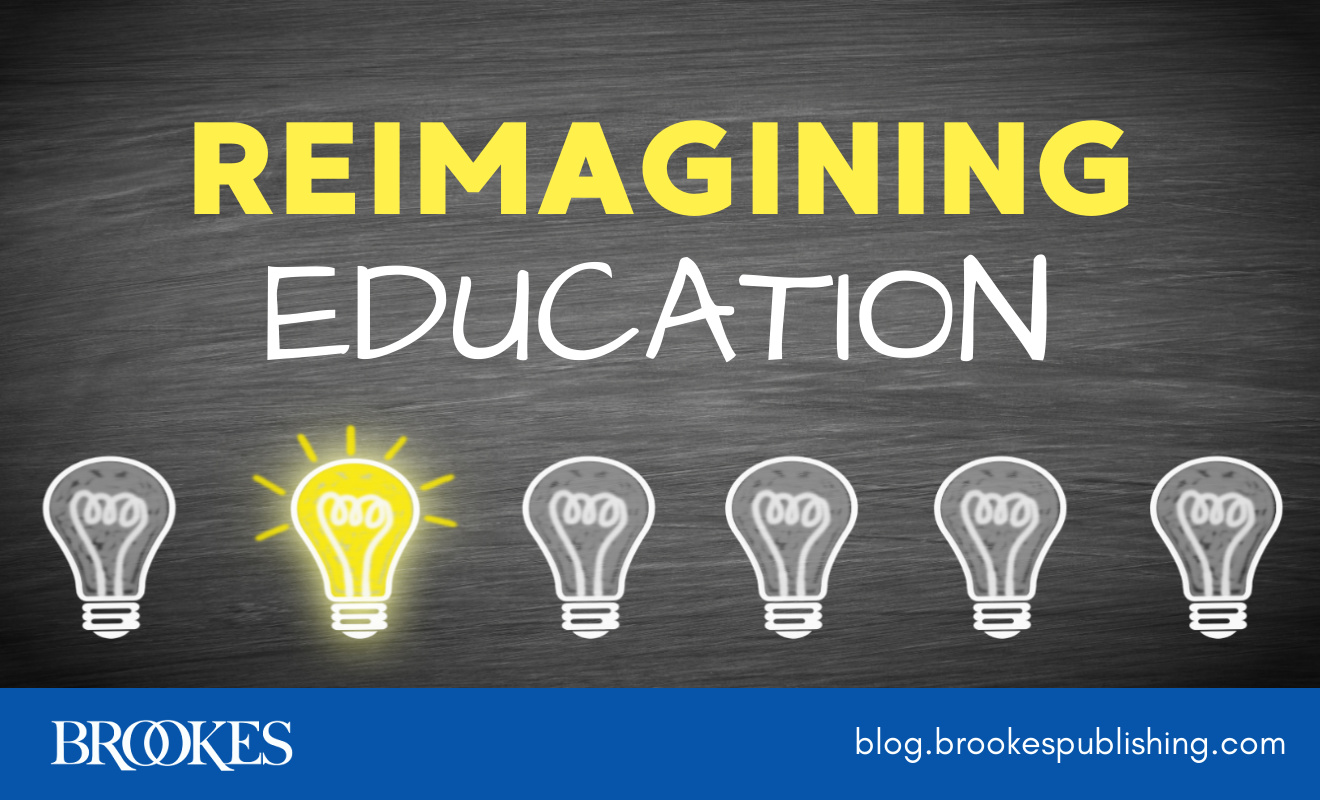One side effect of the COVID-19 pandemic has been its stark highlighting of educational inequities and urgent areas of need in our school systems. As the pandemic continues and schools adapt, we have a unique opportunity to press pause and reimagine what education looks like. What works well in school? Does it work well for all students? What hasn’t worked well? How can we let go of practices that keep some students struggling, while planning new routines and environments that meet the needs of every learner?
In their visionary guidebook Reimagining Special Education, Jenna M. Rufo & Julie Causton tackle these vital questions and examine how shifts in thinking and practice can help learners with and without disabilities thrive in a changing world. They position inclusive education as a necessary framework for educational redesign, highlighting six specific practices to prioritize. Today’s post, excerpted and adapted from the book, briefly introduces these six practices and gives some examples of what they might look like in practice.
Re-Story Students
 By forcing a break in conventional teaching methods, COVID-19 highlighted the fact that we need to appeal to the strengths of students, not labels or perceived weaknesses, to see them in their best light. Instead of assigning labels to determine who needs support or enrichment, Rufo and Causton urge educators to “re-story” their students. When we re-story a child, we focus on their strengths, gifts, and talents rather than deficits, and then provide an environment and instruction to match those assets.
By forcing a break in conventional teaching methods, COVID-19 highlighted the fact that we need to appeal to the strengths of students, not labels or perceived weaknesses, to see them in their best light. Instead of assigning labels to determine who needs support or enrichment, Rufo and Causton urge educators to “re-story” their students. When we re-story a child, we focus on their strengths, gifts, and talents rather than deficits, and then provide an environment and instruction to match those assets.
Here are some sample re-storied student descriptors that reframe perceived weaknesses in a positive way:
Tyson cannot sit still >> Tyson is a bodily kinesthetic learner
Tyson calls out in class >> Tyson is eager to share his thoughts
Tyson runs around the room >> Tyson is physically active
Tyson has attention issues >> Tyson does best when actively engaged in student-centered tasks
Knowing what Tyson is good at will help with capitalizing on his strengths. Although he may need strategies to help limit distractions—and might benefit from incentives to stay on task—begin by examining barriers in the environment that are problematic for Tyson. Then, construct inclusive support that builds on his strengths (for example, more student-centered activities, opportunities for movement, and differentiated materials). Focusing on barriers in the classroom rather than one student’s “deficits” will help you provide more engaging experiences for all students.
Redesign Instruction and Assessment
As teachers switched over to virtual instruction in 2020, many implemented practices that better meet the needs of all students. Educators should plan to continue many of these strategies, including:
Individualization and differentiated instruction. Some of the best distance learning plans were those that varied their approaches and expectations because each student was experiencing unique circumstances. Provide students with multiple methods of output, such as writing, speaking, drawing, technology, acting, music, and bodily kinesthetic learning. Allow for choice and movement throughout the lesson, and use varied instructional methods, such as station rotations, small group activities, guided practice, and independent work.
Prioritization of content. In transitioning to remote education, teachers were forced to prioritize essential content and skills to ensure that the precious time they had with students was used wisely. The most successful educators in distance learning understood that although there will always be more content to cover, the way it’s delivered often can be streamlined. For example, do students really need to complete 30 problems for homework, or would a simplified, more engaging approach work better? Identify the most essential skills that all students require, and map backward from there.
Ongoing assessments and flexible grading policies. During virtual instruction, many assessment and grading policies reflected a non-traditional approach that used more individualized feedback. These techniques, such as frequent feedback loops, performance- and project-based assessments, and more flexible and responsive grading policies, should be continued as we rebuild what it means to teach and assess. Although these practices are particularly beneficial for students with disabilities, they improve the quality of education for all students.
Restructure Intervention and Enrichment
 The traditional approach to students who need intervention and enrichment has been to remove and remediate. But what if we redesigned this system to provide universal access, support, and enrichment for every child? All students require some form of intervention and enrichment from time to time—not just students who have been given specific labels.
The traditional approach to students who need intervention and enrichment has been to remove and remediate. But what if we redesigned this system to provide universal access, support, and enrichment for every child? All students require some form of intervention and enrichment from time to time—not just students who have been given specific labels.
For example, instead of…
Sacrificing access to core curriculum in favor of intervention or separate special education programming
Imagine…
An inclusive structure that provides supports and enrichment for all students through the intentional scheduling of an intervention/ enrichment block
Instead of…
Automatic assignment of struggling students to intervention
Imagine…
An effective curriculum with high-quality core instruction that reduces the need for additive components
Instead of…
Use of universal screening tools to sort, label, and exclude
Imagine…
Use of data to refine instruction, assess weaknesses in the curriculum, and provide targeted supports
Revitalize Co-Teaching
 Co-teaching is one of the most frequently implemented models for students with disabilities in general education settings. But all too often, coteaching partnerships fail to live up to their potential. It’s time to move beyond mere access to general education settings and strengthen co-teaching so we can effectively serve more students with and without disabilities in general education. Some strategies to focus on include:
Co-teaching is one of the most frequently implemented models for students with disabilities in general education settings. But all too often, coteaching partnerships fail to live up to their potential. It’s time to move beyond mere access to general education settings and strengthen co-teaching so we can effectively serve more students with and without disabilities in general education. Some strategies to focus on include:
- Varied use of co-teaching models that maximize the talents of both teachers
- A co-taught classroom in which all learners are actively engaged members of the community, and not just physically present
- Reflection on implementation and constantly revisiting the question what can two do better than one?
- Dedicated co-planning time and limiting the number of general education co-teachers for the special educator
- Recognition that unique circumstances (such as virtual learning) require novel approaches
Administrative vision and leadership are critical to the success of co-teaching partnerships. Through gathering information to assess current co-teaching practices, setting goals, and providing structural supports, administrators can strengthen the efficacy of co-teaching in their schools.
Realign Service Delivery
 Co-teaching is the inclusive service delivery model most frequently used to support students with disabilities in general education settings. But there are other supportive approaches that can be equally or even more effective, such as:
Co-teaching is the inclusive service delivery model most frequently used to support students with disabilities in general education settings. But there are other supportive approaches that can be equally or even more effective, such as:
Consultative Support Model: a special educator collaborates with general education teachers to support students with disabilities without being present in the classroom every day.
Push-In Support Model: the special educator is regularly scheduled to support general education classrooms, bringing services to students rather than pulling students out of the classroom.
Inclusion Facilitator Model: a special educator offers support to general educators through job-embedded coaching as well as by the design of accommodations, modifications, and behavioral strategies. (See this blog post for more on inclusion facilitators and how they can help.)
The flexibility associated with these roles has been useful in remote learning, and these positions can provide many benefits during in-person learning as well.
Reconceptualize Equity
 Distance learning shone a spotlight on inequities in schools and society. When schools could no longer provide in-person instruction, more affluent districts possessed the tools needed to begin distance learning immediately, while poorer systems either raced to acquire technology, provided students with paper packets, or shut down completely. Students with disabilities experienced unique challenges, as the services or therapies they typically received in person often just didn’t translate well in online environments.
Distance learning shone a spotlight on inequities in schools and society. When schools could no longer provide in-person instruction, more affluent districts possessed the tools needed to begin distance learning immediately, while poorer systems either raced to acquire technology, provided students with paper packets, or shut down completely. Students with disabilities experienced unique challenges, as the services or therapies they typically received in person often just didn’t translate well in online environments.
The need to reconceptualize the idea of equity is underscored now more than ever. Equity cannot be achieved without inclusion. Any reform to improve equity in a system must first examine who is included and excluded in your school community. As you seek to create more equitable opportunities for all, consider these key questions:
- What bias-based beliefs held both individually and systemically contribute to inequitable practices in your school?
- What practices and structures lead to the creation of educational insiders and outsiders? How can those problems be remedied?
- Who is identified for special education, gifted education, and advanced coursework? What student groups are overrepresented or underrepresented?
- How does the school culture foster or prevent a welcoming environment for all students?
DOWNLOAD THE GRAPHIC
 Save and share the key points from this post as a full-color graphic!
Save and share the key points from this post as a full-color graphic!
Use these 6 calls to action as a guiding light as you rethink practices and advocate for change in your school and district. Together, these guidelines can help every school address the unique needs of all students and bridge learning gaps for kids who struggle. For an in-depth look at how to put these principles into practice, be sure to pick up the book that inspired today’s post!

Reimagining Special Education
Using Inclusion as a Framework to Build Equity and Support All Students
By Jenna M. Rufo, Ed.D., & Julie Causton, Ph.D.
A visionary call to action from inclusion experts Jenna Mancini Rufo and Julie Causton, this book guides readers in creating more equitable schools and services, through practical strategies teachers can use right away and big-picture questions for administrators. Throughout the book, vignettes and anecdotes spark lightbulb moments for educators and show what recommended inclusive practices look like in real classrooms.
Stay up to date on the latest posts, news, strategies, and more!
Sign up for one of our FREE newslettersTopics
More posts like this

10 Things Educators Can Do to Support All Students
January 25, 2022
Education Beyond 2020: Everything Happens for a Reason? Nope.
February 2, 2021


Write a Comment
Your email address will not be published. Required fields are marked *
Post a Comment